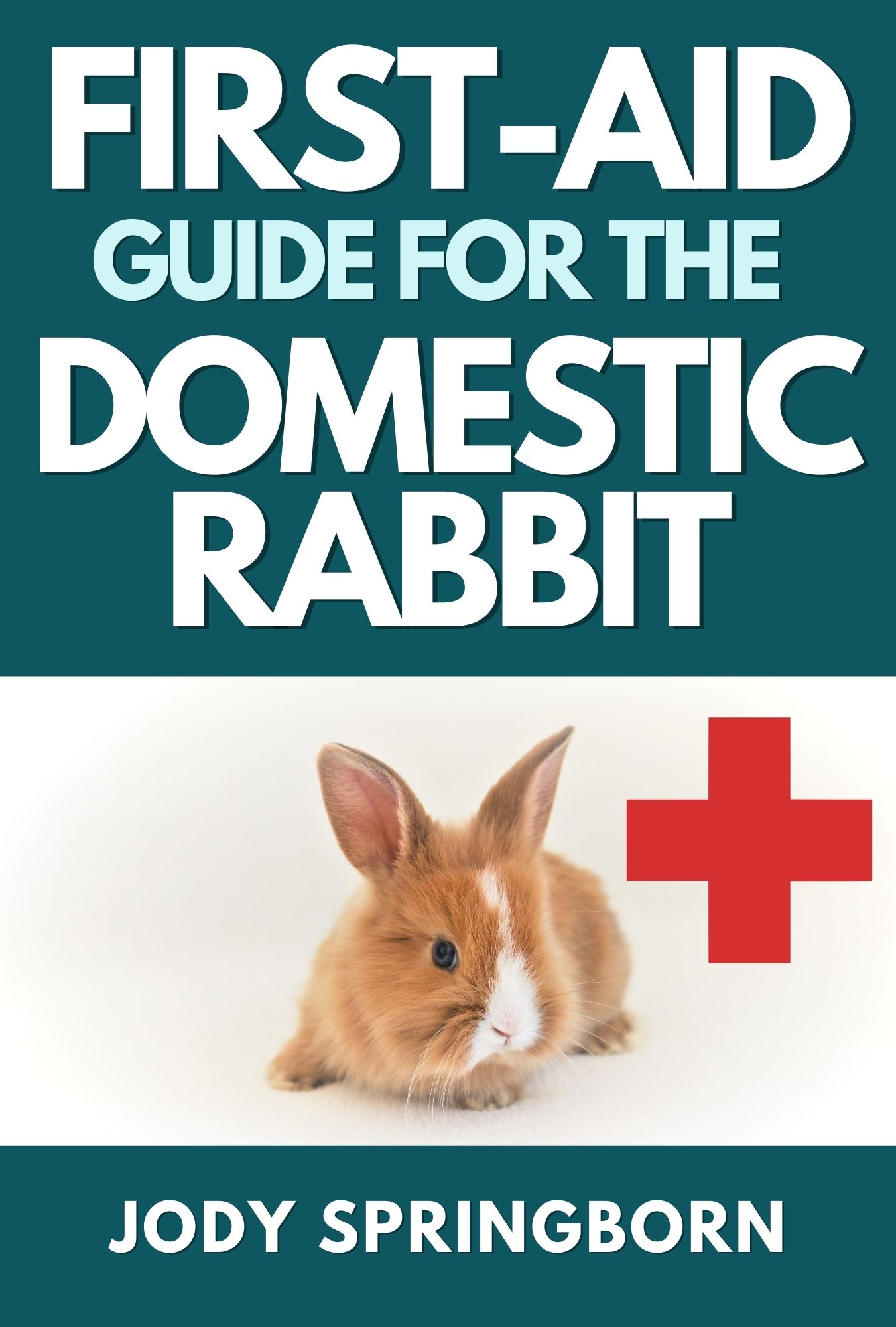- Home
- Handling Rabbits
Handling Rabbits
 Photo by New Africa|Shuttershock.com
Photo by New Africa|Shuttershock.comThe Terror of Handling Rabbits
Handling rabbits is one of the most stressful things for new rabbit owners to learn. Rabbits are fragile little creatures. The more people learn about them, the more people stress about handling them. It seems to be instilled early on that any sort of mishandling will lead to either injury, the bunny's untimely demise, or at the very least, earn you a lifetime of hatred and mistrust from your beloved pet. None of these options fosters a feeling of calmness.
 There is a strong possibility that I am up to no good.
There is a strong possibility that I am up to no good. Photo by Edou Hoekstra on Unsplash.
Let’s put things into perspective and make handling rabbits less nerve-wracking. It’s true rabbits are fragile and do not like to be held, but there are moments where you have to be able to pick up your bunny, whether it is to trim nails or to put in a carrier or move him out of harm’s way. It’s important as owners that we are confident enough to interact with our pet in this way. Rabbits can sense when their owners are scared, nervous or worried. This in turn puts them on edge, making the task harder to complete safely.
Why Is It So Difficult to Handle a Rabbit?
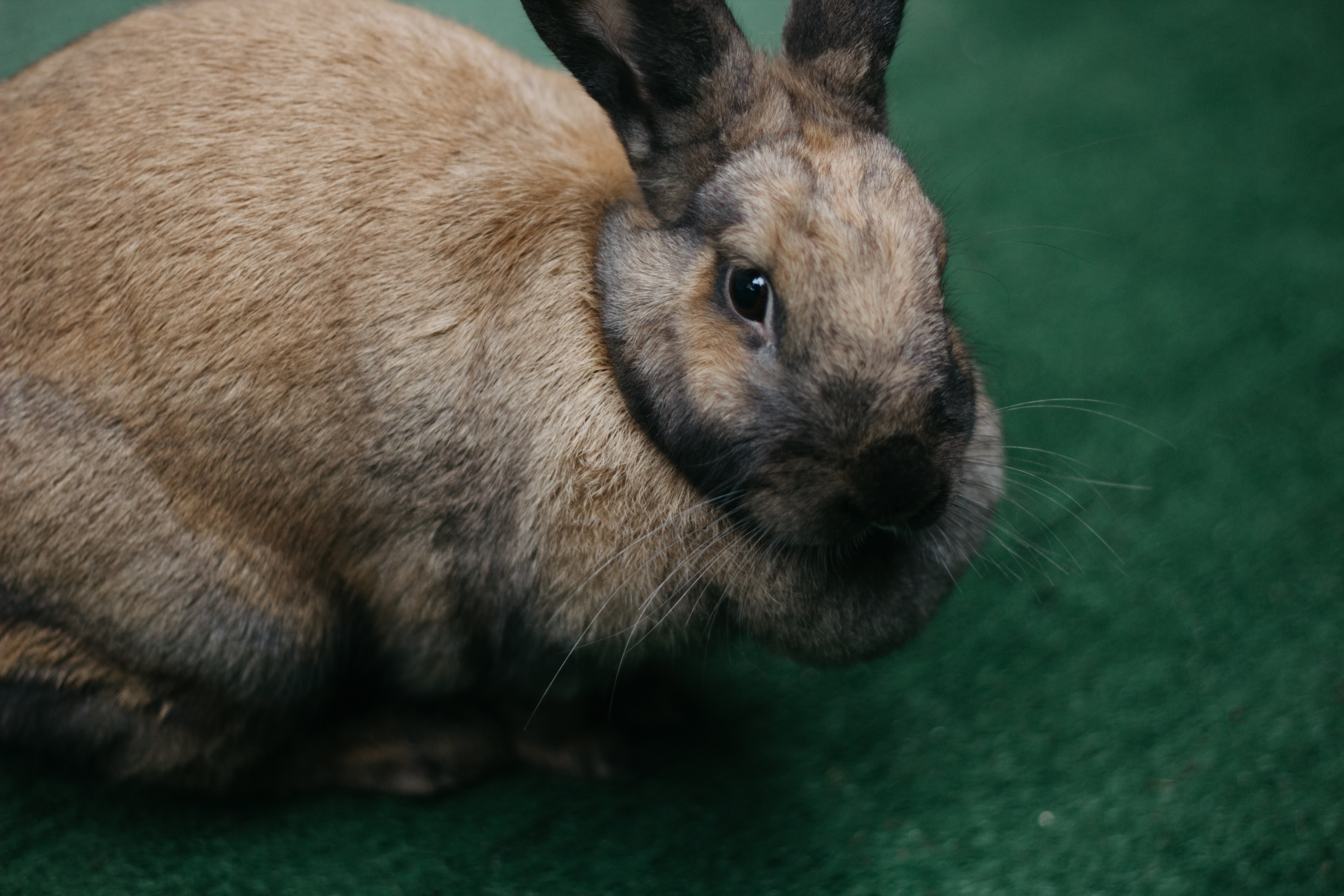 Photo by Itay Kabalo on Unsplash.
Photo by Itay Kabalo on Unsplash.The answer is because rabbits are prey animals. Even though our spoiled little pets are used to soft beds and having us serve them at all times, they have certain instincts hardwired into them. One of those instincts is to be aware of predators, which happens to include people. We may have developed a certain amount of trust with our pets, but the first thought they have when we lift them off their feet is, “OMG! I’m going to die!” Chasing after them and lifting them off their feet is something predators, such as hawks, do just before the bunny becomes supper. That is why most rabbits are not thrilled to be picked up and cuddled. It's more of a terrifying experience, rather than an opportunity to snuggle with their human. That is why if we want to establish a strong and positive bond with our bunnies, we need to respect their need to have their feet firmly on the ground.
Of course there are times in which we will need to pick them up, and that is fine. They will forgive you for the indignity, especially if there is a treat involved.
It's the Biology
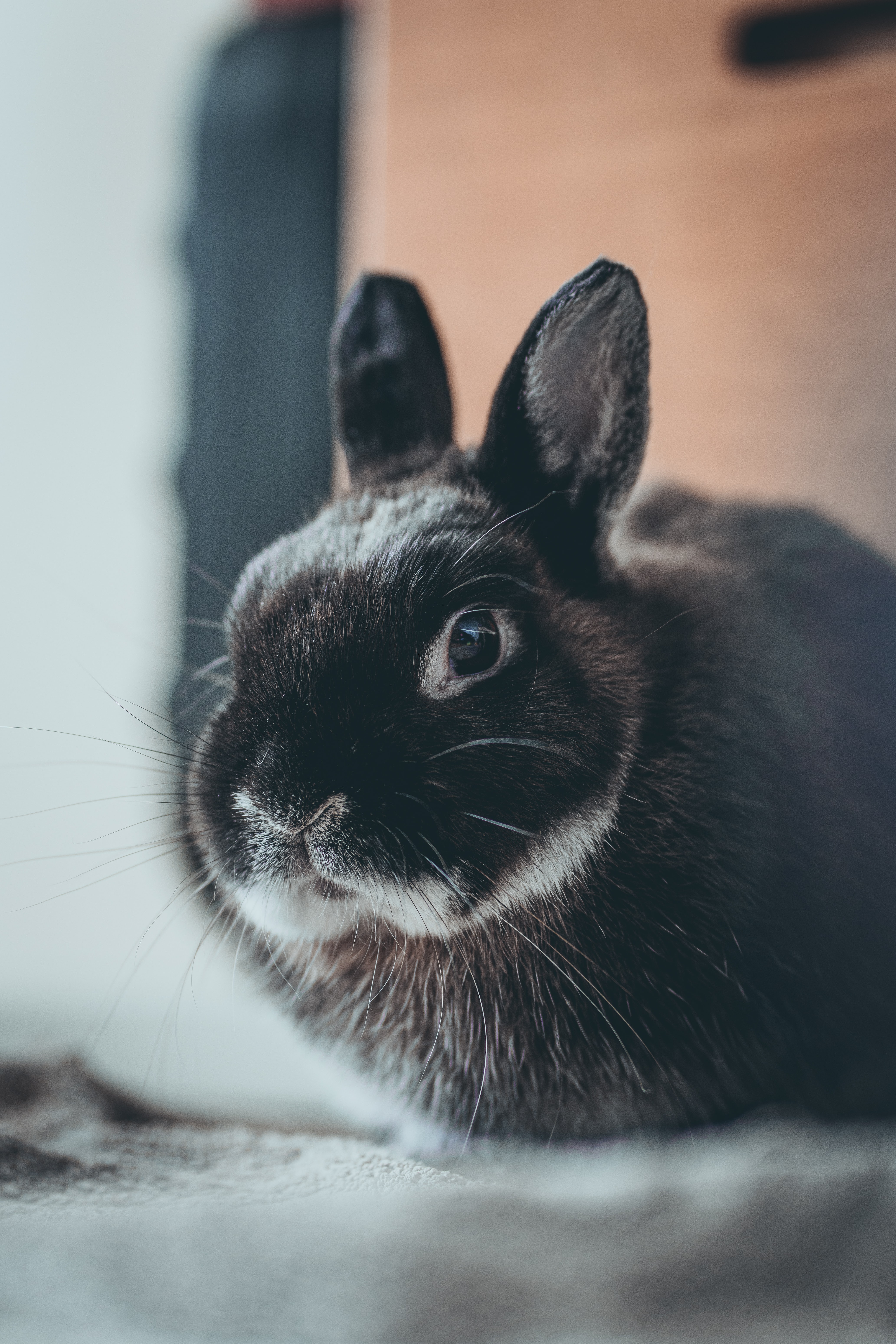 Photo by Ingmar on Unsplash.
Photo by Ingmar on Unsplash.The skeleton of a rabbit represents approximately 7-8% of its total body weight (Hillyer, Quesenberry, Ferrets, Rabbits, and Rodents 1997). Compare that percentage to 12-13% of that of a cat or about 15% of a human. The muscles, particularly in the back legs, are very strong as they are meant for running. This means if the rabbit feels panicked, they can kick their back legs hard enough to break their back or legs. The same result may happen if a rabbit decides to jump from a significant height. This could be from a table or the arms of the owners, but it can also be as low as a couch or bed. This does not mean that every time a rabbit leaps down from a couch, tragedy strikes. It just means the potential is there.
What Not To Do
The following methods should not be done when handling rabbits.
- Scruffing: Scruffing is using one hand to pick up the rabbit at the 'scruff' (back of the neck), while supporting the back legs with the other hand. Although this method is still taught to vet and vet tech students, it is not an appropriate way to pick up rabbits. Rabbits do not carry their young around like a mother cat, nor do rabbits have the same kind of anatomy as a cat. When you lift a rabbit from the scruff, the skin is torn loose from the muscle, causing discomfort. Being picked up by the neck also mimics predators such as hawks and foxes. As caretakers, we want to minimize pain and fear as much as possible.
- Picking up by the ears: Just don't do it. It's extremely painful.
- Trancing: Lots of people like to cradle a rabbit flat on its back, like a baby. The bunny lies there with his feet up in the air and he looks utterly adorable. Unfortunately, the rabbit may not be at all relaxed. Many prey species such as rabbits may freeze when stressed or threatened. They are placed on their back, not responding to any external stimuli for several minutes. This is the bunny version of 'playing dead', and it is the last ditch response when being attacked by a predator. They are aware of what is going on, but will not react. This is a scary experience for a rabbit! Heart rate, blood pressure and respiratory rate drops. If the bunny has respiratory or heart issues or is a senior, such a drop could be dangerous and can lead to death.
If you must inspect a bunny's underside (whether medical or grooming reasons), make sure the bunny is sitting up as much as possible.
How to Pick-Up a Rabbit
The key to successful handling is to cause minimal stress and to make the bunny feel secure. There are two techniques to handling rabbits that I will discuss below. I don’t really use the “football” method very often, but I have used it when I’ve had to handle a particularly nervous bunny. Covering the eyes tends to calm them down.
Usually, the technique I use is one in which I have a firm grip on the bunny and keep them close to my body. If you are left-handed, just use the opposite hands from which I describe.
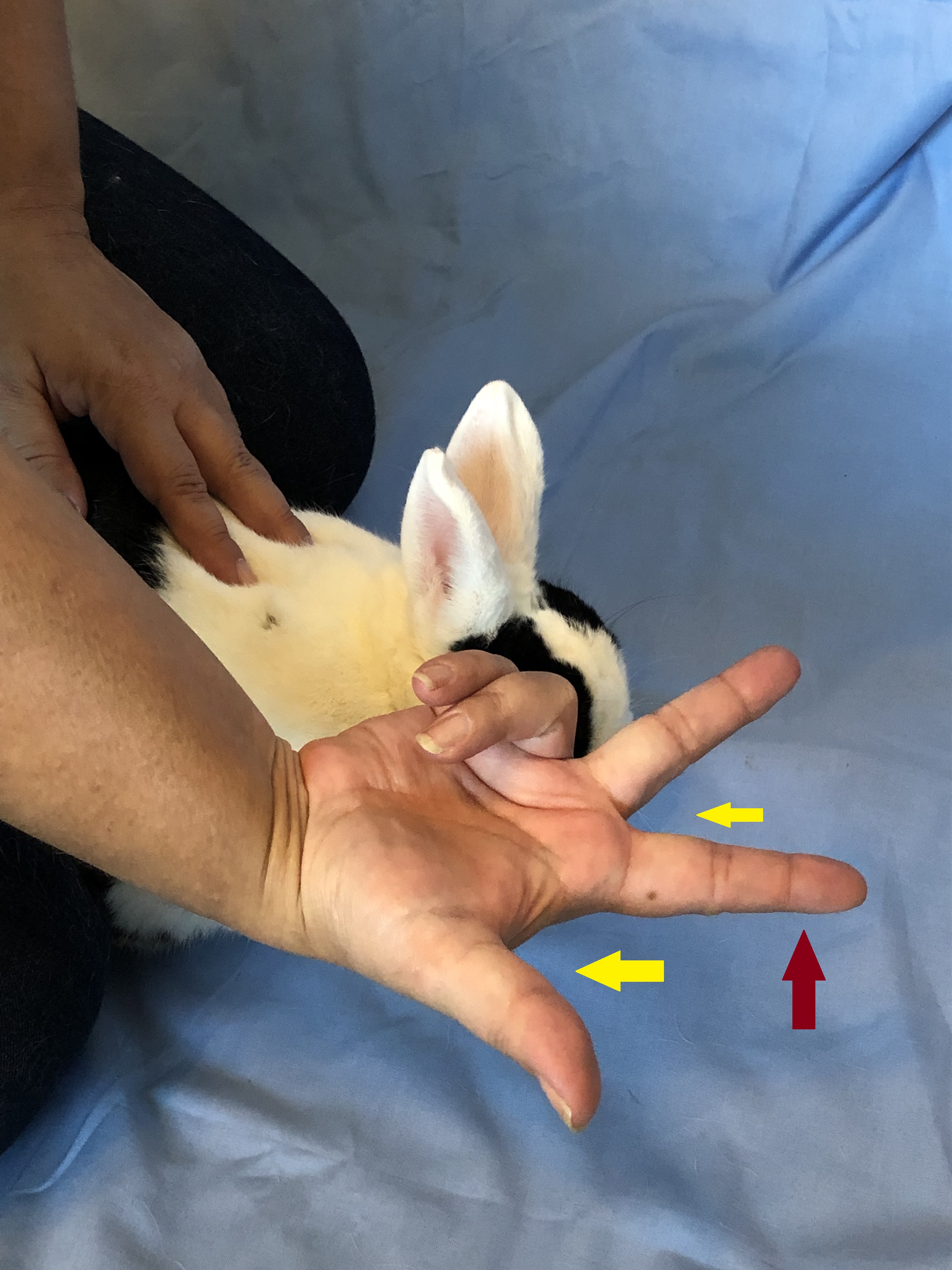 The two yellow arrows indicate where the front legs are held. The red arrow indicates the finger that rests on the bunny's chest.
The two yellow arrows indicate where the front legs are held. The red arrow indicates the finger that rests on the bunny's chest.1. Take your right hand. Hook your thumb under the right arm pit of the bunny. Hook your middle finger under the left arm pit of the bunny. Your index (second) finger should rest on the chest of the bunny. This acts like a harness on the bunny. It will be much harder for them to launch from your arms with this grip.
2. With your left hand, scoop the rear legs in a firm grip. Remember, they can seriously hurt themselves with a swift kick, so you want to make sure you are holding those back legs and feet.
 Getting ready to pick up Panda. Notice I have her front right leg cradled between my thumb and middle finger.
Getting ready to pick up Panda. Notice I have her front right leg cradled between my thumb and middle finger. My index finger is resting on Panda's chest, while her left leg is between my index and middle finger. With my left hand, I am holding her rear legs.
My index finger is resting on Panda's chest, while her left leg is between my index and middle finger. With my left hand, I am holding her rear legs. Your torso adds another layer of security for the bunny. Do not hold the rabbit out at arm's length.
Your torso adds another layer of security for the bunny. Do not hold the rabbit out at arm's length.3. Hold the bunny upright against your chest. Your body adds an extra layer of security for the bunny. If you hold the bunny out at arms length, they are well aware that they are dangling far off the ground. They may become nervous and struggle. Hold them close to ease their stress and make them feel safe.
4. When you put them down, get close to the ground and open your grip. Don’t let them jump from your arms.
5. If they struggle while you are carrying them and you feel like you are losing control, get close to the ground and let them go. Don’t let them run away, but adjust your grip and try again.
Click here to see the video!
The 'Football' Method
As mentioned before, this is a good way to handle a bunny who is very stressed about being picked up. If they continually struggle with the method described above, the following method may ease their anxiety some. Holding them tight while covering their eyes can calm them down quite a bit.
- Take your right hand. Hook your thumb under the right arm pit of the bunny. Hook your middle finger under the left arm pit of the bunny. Your index (second) finger should rest on the chest of the bunny. With your left hand, scoop the legs in a firm grip (as described above).
- Slowly rest the bunny on your left forearm. You are still holding the legs, but you can position the bunny with your right hand. Tuck the bunny head under your arm and hold the bunny firmly against your body. You can move your right hand to rest on the back of the bunny.
Click here to see the video!
How to Handle the 'Difficult' Rabbit
 Cupcake and Sprinkles: 8lbs each of nervous rabbit!
Cupcake and Sprinkles: 8lbs each of nervous rabbit!There are several ways in which a rabbit can make handling difficult.
- Running away and hiding in hard-to-reach places, such as under the bed.
- Kicking and struggling once picked up.
- Cowering at the back of a carrier or cage.
- Grunting and biting.
Animals can easily pick up on nervous energy coming from humans. If you are timid because you are unsure of what you are doing, afraid of hurting your bunny or afraid of being bitten or scratched, this will make the task much harder.
Practice the techniques until you are comfortable handling your bunny. You can sit in the pen and calmly practice picking up and holding. If your bunny squirms free, it’s just a little jump from your arms and he won’t get hurt. Don’t forget to reward your bunny with his favorite treats.
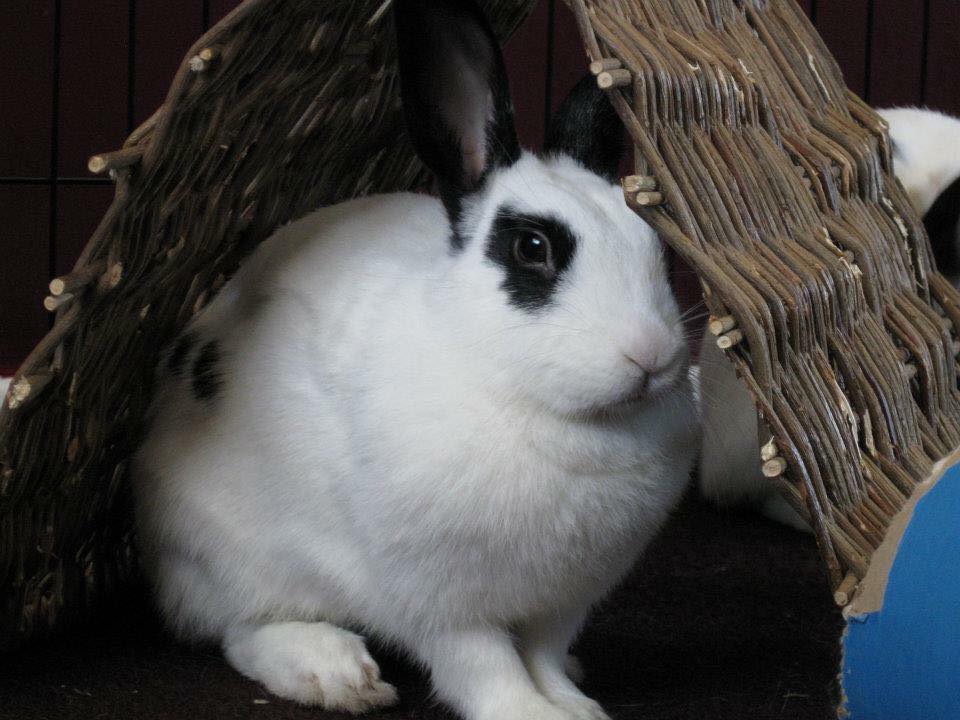 Zoe making sure I don't pick her up.
Zoe making sure I don't pick her up.Running away and hiding: My girl Zoe loves me, but hates being picked up. When I need to do so, she is on the run. I don't want to chase her all over the house, so I limit her space to her pen or the room she lives in (she can't hide under furniture in my office). She will let me pick her up after a few minutes, and during this time, I speak softly to her and I never lose my temper with her. I know this is who she is and expect this sort of drama. I limit it by limiting the space where she can run (I will also take away boxes). What I want to avoid is dragging her out of her hiding place, literally kicking and screaming.
Kicking and Struggling: Most of the time this has to do with not holding the bunny properly or lacking the confidence. Remember, rabbits can feel when you are nervous about holding them. That being said, there are rabbits who will kick and struggle regardless of how well you pick them up. Cupcake likes to kick just before you set him down. In anticipation of this, I make sure I know exactly where I would like to set him down while ensuring I have a firm grip on his back feet. He still struggles, but I try to minimize his panic as much as possible.
Cowering at the back of the cage or carrier: This type of rabbit is extremely fearful. The last thing you want to do is reach in and drag this bunny out. You want this bunny to come out on his own. This may take some time and patience. Offering a treat and speaking softly will help the bunny gain confidence. If you are in a time-sensitive situation (such as a vet office), I would make sure you have a top loading carrier in which you can easily remove the bunny. If the only door is on the side, then disassemble the top.
Of course in an emergency (such as your house is on fire), you need to do what you can to pack up your bunny. However, if you do happen to have a fearful rabbit, work with him to build trust.
Aggression: A more in-depth discussion about rabbit aggression is in the Rabbit Personality section. Generally, rabbits will bite for a number of different reasons - fear, anger and/or territorial behavior - are common reasons. It is important to spend time building trust. Treats, a soft voice and gentle touch can go a long way to calm down a mistrustful bunny. However, do not be afraid to adequately protect yourself with long pants, sleeves, closed-toe shoes and gloves. Being afraid of bites will not help you handle your rabbit safely and with confidence.
With rabbits who are aggressive and/or like to run, it is useful to learn how to safely halt a bunny. You can easily stop a bunny in his tracks by gently pushing down on the shoulders. You do not need to exert much pressure at all (see pictures below). The bunny will freeze and get as flat on the ground as possible. You can then safely secure your rabbit in good grip.
Click here to see the video.
 This is a bean bag neck pillow which will be our stand-in bunny, so you can see how much pressure I am placing on a bunny's shoulders.
This is a bean bag neck pillow which will be our stand-in bunny, so you can see how much pressure I am placing on a bunny's shoulders. I really am putting the minimum pressure down on the shoulders. This will be enough for a bunny to stop and allow you to safely handle.
I really am putting the minimum pressure down on the shoulders. This will be enough for a bunny to stop and allow you to safely handle.

